Fully Printed Flexible Internet of Things Nodes with Energy Scavenging and Non toxic Energy Storage, Paul R. Berger
.
.
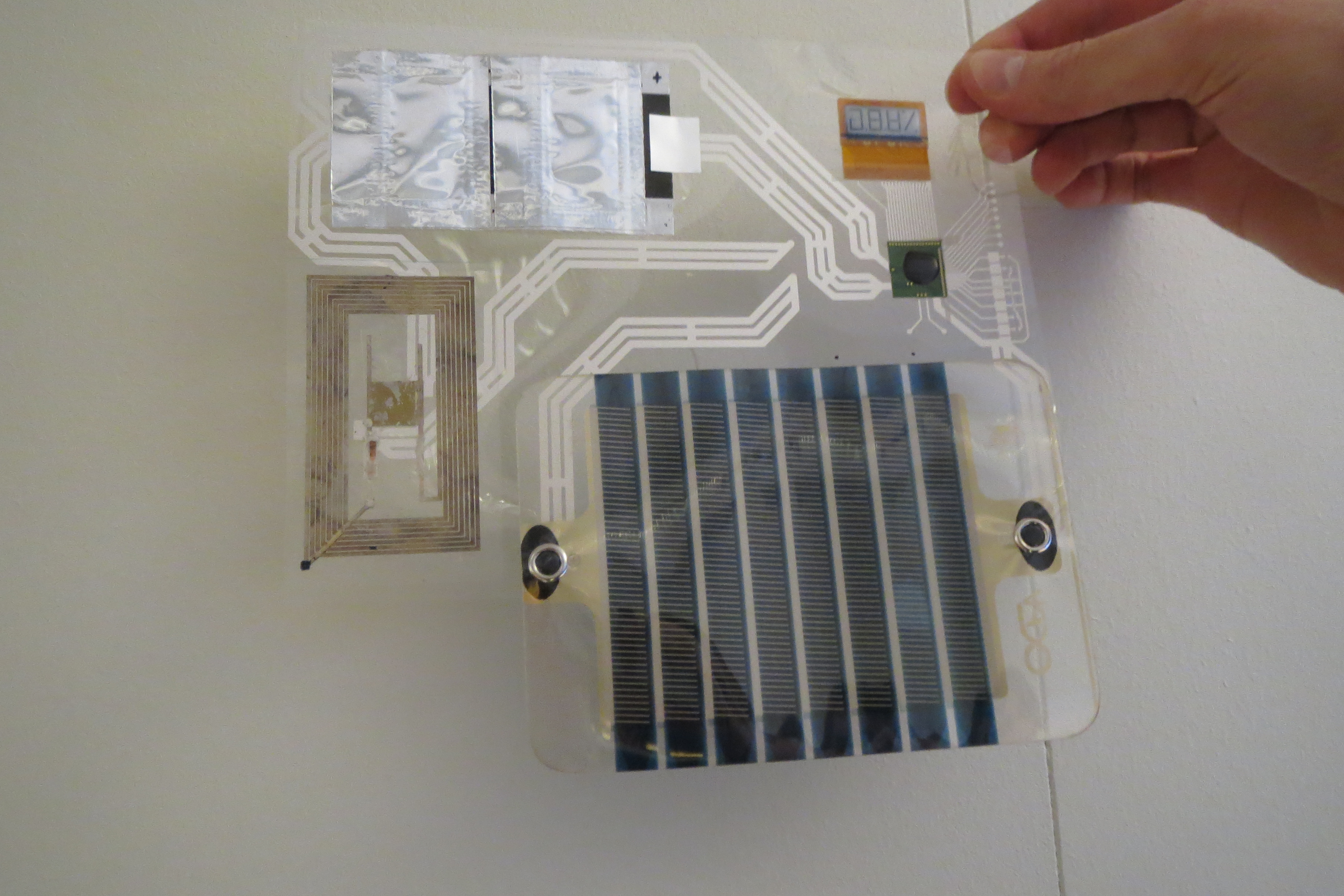 |
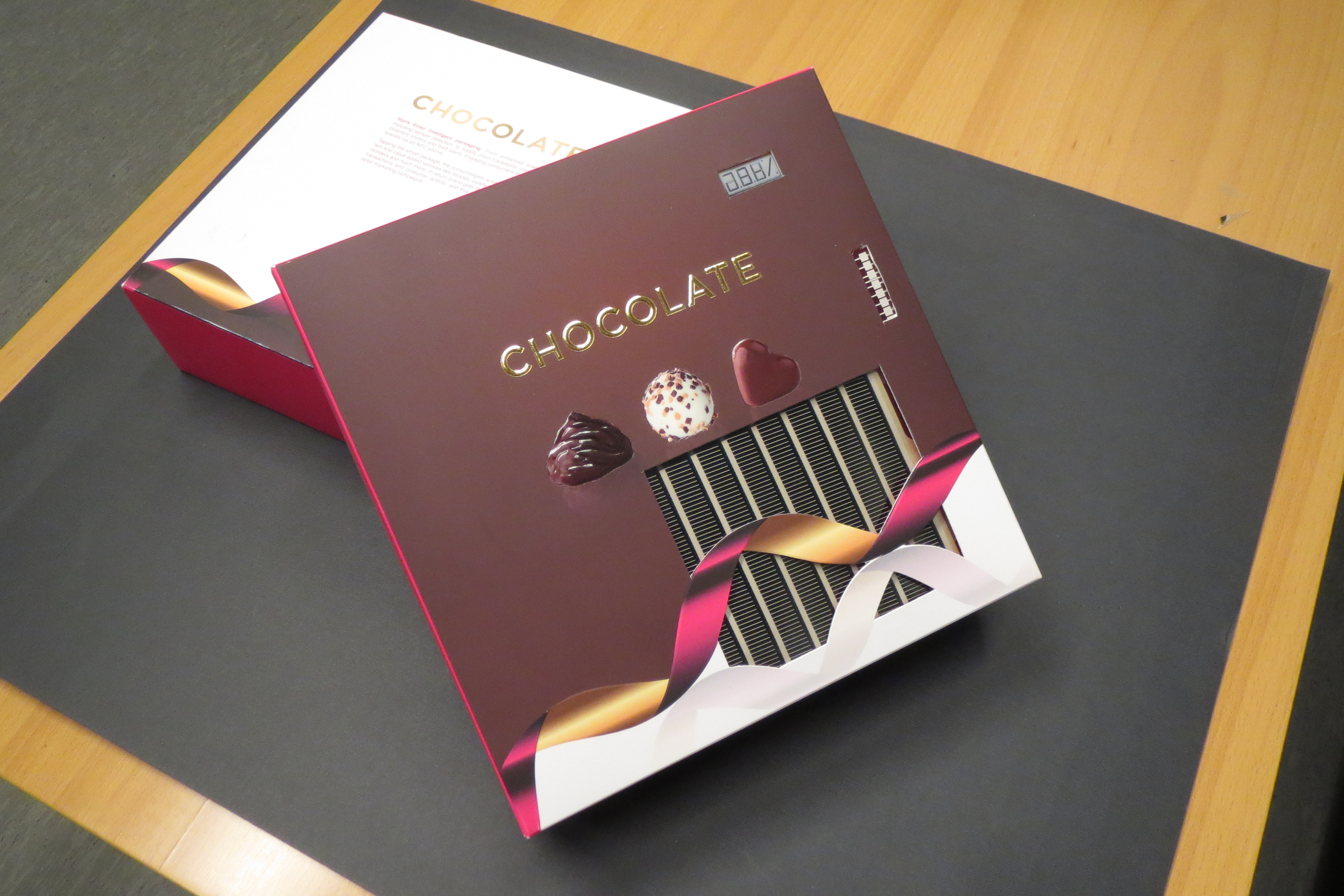 |
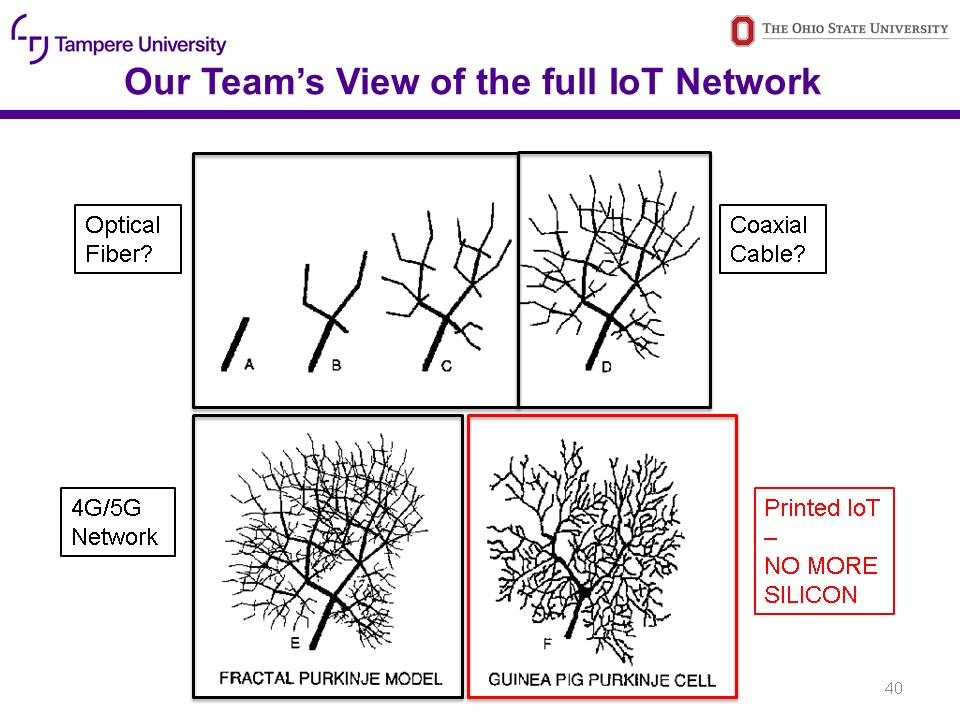 |
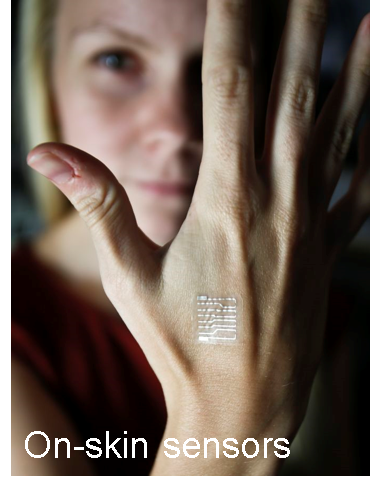 |
 |
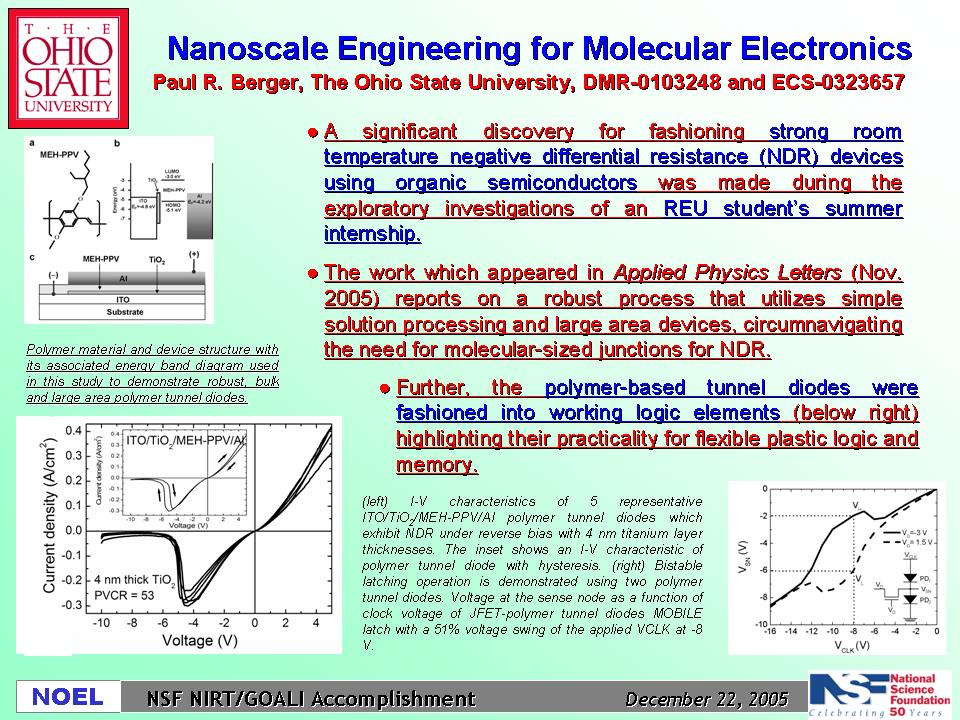 |
Advisor: Paul R. Berger
OSU Students:
Ryan Mattei (ECE Masters)
Ms. Mainmouna Niang (ECE Undergrad researcher)
Ms. Lizzy Miller (ECE undergrad researcher)
Finnish Collaborators:
Prof. Donald Lupo (Tampere University, Finland)
Prof. Matti Mantysalo (Tampere University, Finland)
Prof. Mikko Valkama (Tampere University, Finland)
Finnish postdoc and students:
Dr. Serges Zambou (postdoc)
Sagar Bhalerao (Ph.D. candidate)
Ms. Miao Li (Ph.D. candidate)
Ms. Anna Airio (Masters thesis)
Former Graduate Students:
Jeremy J. Guttman (ECE Master's thesis 2016)
Conner B. Chambers (ECE Masters, 2015)
Petri Heljo (Visiting PhD candidate from Tempere University of Technology, Finland)
Woo-Jun Yoon (ECE Master's thesis 2006, Ph.D. 2009)
Ms. Sita Asar (Physics undergrad researcher)
Additional Collaborators:
Prof. Al Rey Villagracia (De La Salle University, Manila, Metro Manila, Philippines)
Prof. Gil Nonato C. Santos (De La Salle University, Manila, Metro Manila, Philippines)
|
Importance of the Problem:
This project examines quantum functional devices in the conjugated
polymer system for molecular electronic devices and circuits.
These enhanced circuits are aimed to be more energy thrifty than conventional transistor-only
circuits and facilitate high-speed operation to reach node-to-node wireless communication.
It has been predicted that by 2021, there will be 200 billion connected devices which should all operate and
integrate smoothly with the Internet but also provide a vast spectrum of services in e.g. healthcare, smart homes,
industry automation, and environmental monitoring. As the "Internet of Things" (IoT) or "Internet of Everything"
(IoE) continues to grow, the number of connected objects will grow at explosive rates. For this to be possible,
a paradigm shift from current approaches based on rigid silicon CMOS where batteries are used will be required.
In the future, IoT objects will have to be extremely low cost, flexible and thin (and in some cases also stretchable)
in order for this ubiquitous electronics to be unobtrusive. In addition, these distributed devices must harvest
their energy from other means than batteries, as massive numbers of batteries mean massive end of life, waste
disposal and recycling issues.
The ambition of this international collaboration is to deliver the technology to enable this paradigm shift. Advances
in energy harvesting and storage will improve the ability to harvest energy from a variety of sources such
as light, radio waves and motion and store it in printed supercapacitors that are non-toxic and unproblematic at end
of life (Don Lupo). The exploitation of tunneling devices and novel devices combining atomic layer deposition (ALD)
and printing will make possible a new generation of low-power and high-speed circuits for power management,
data storage, computation and wireless communication (Paul Berger). As a result, this team will open the path to
a true Internet of Things that will cost very little, be placeable anywhere, and deserve the description "environmentally
friendly". These objects will be energy autonomous, battery free, be able to sense, process and analyze environmental,
body (Matti Mantysalo) and other information and transfer it by acceptable wireless protocols (Mikko Valkama) to networks
of the user’s choice. Because they will be manufactured by low temperature, low cost mass manufacturing processes,
they will be ultra-low cost and able to be put on thin, flexible carriers that make them able to be truly put anywhere.
Brief Description of Our Work and Results:
Conjugated polymers, with pi molecular orbitals delocalized along the polymer chain,
are useful organic semiconductors that provide the possibility of molecular electronics
for low power organic-based memory and logic. Quantum functional devices based upon
carrier tunneling processes open vistas into very efficient and low power consumption
circuitry that would be ideal for these applications.
We demonstrate here strong room temperature NDR for
poly[2-methoxy-5-(2'-ethyl-hexyloxy)-1,4-phenylenevinylene] (MEH-PPV) polymer tunnel
diodes using a thin TiO2 tunneling layer (~2-8 nm) sandwiched between the
MEH-PPV and the indium tin oxide anode.
A key advantage is the pronounced NDR using a thick polymer layer with a large
active area, circumnavigating the need for molecularly sized junctions.
Current-voltage measurements show large and reproducible NDR with a PVCR as
high as 53 at room temperature. We also demonstrate basic logic circuit operation
using a pair of these polymer tunnel diodes connected in series to form
a monostable-bistable transition logic element latch. Our results indicate
that polymer tunnel diodes are potential candidates for many flexible, low-power
logic and memory applications for organic devices by using low-cost
and simple solution processing.
Awards, Citations and Recognitions
Patents
- "Demonstration of Room Temperature Negative Differential
Resistance in Polymer Diodes Using a Thin Oxide Tunneling Barrier
at the Anode," Paul R. Berger and Woo-Jun Yoon, [Disclosure submitted
May 17, 2005; provisional filed November 3, 2005, full patent filed
November 3, 2006, Serial. No. & Code 11/592,419].
Publications
Large Room Temperature Negative Differential Resistance
- "Room Temperature Negative Differential Resistance
in Polymer Tunnel Diodes using a Thin Oxide Layer at the Anode
and Demonstration of Threshold Logic," Woo-Jun Yoon, Sung-Yong
Chung, Paul R. Berger, and Sita M. Asar, Applied Physics
Letters, 87, 203506 (November 14, 2005).
PDF (173 kB)
[
 , First Organic Tunnel Diode Viable for Circuitry (cited 49 times)
, First Organic Tunnel Diode Viable for Circuitry (cited 49 times)
Manufacturable NDR Devices and Processes
- "Printed and organic diodes: devices, circuits and applications,:
T. M. Kraft, P. R. Berger, and D. Lupo, Journal of Flexible and
Printed Electronics., vol. 2, 033001
https://doi.org/10.1088/2058-8585/aa8ac3
(2017) (Invited).
PDF (3581 kB)
- "Negative Differential Resistance in Polymer Tunnel Diodes Using
Atomic Layer Deposited, TiO2 Tunneling Barriers at Various
Deposition Temperatures, Jeremy J. Guttman, Conner B. Chambers, Al Rey Villagracia,
Gil Nonato C. Santos and Paul R. Berger, Organic Electronics
Vol. 47, pp. 228-234,
https://doi.org/10.1016/j.orgel.2017.05.015
(August 2017).
PDF (1246 kB)
[
 , First Organic Tunnel Diode Using Atomic Layer Deposition
, First Organic Tunnel Diode Using Atomic Layer Deposition
- "Anodic Oxidation of Ultra-Thin Ti Layers on ITO Substrates and their
Application in Organic Electronic Memory Elements," Petri Heljo, Karsten Wolff,
Kimmo Lahtonen, Mika Valden, Paul R. Berger, Himadri Majumdar, and Donald Lupo,
Electrochimica Acta, vol. 137, pp. 91-98 (2014).
PDF (1523 kB)
Solution-Processable, Printable Low Voltage Transistors
- "0.6V Threshold Voltage Thin Film Transistors with Solution Processable Indium Oxide (In2O3) Channel and
anodized high-k Al2O3 Dielectric," Sagar R. Bhalerao, Donald Lupo, Amirali Zangiabadi, Ioannis Kymissis,
Jaako Leppaniemi, Ari Alastalo and Paul R. Berger, IEEE Electron Device Letters, 40,
pp. 1112-1115 (July 2019).
https://doi.org/10.1109/LED.2019.2918492.
High Frequency Rectifying Solution-Processable, Printable Diodes for RF Energy Harvesting
- "0.7 GHz Solution-Processed Indium Oxide Rectifying Diodes," Miao Li, Mari Honkanen, Xianjie Liu,
Charka Rokaya, Andreas Schramm, Mats Fahlman, Paul R. Berger, and Donald Lupo, to appear IEEE Transactions
on Electron Devices (accepted November 13, 2019).
Communication Protocols within a Energy Scavenging IoT Environment with Finite Power Available
- "M2M Communication Assessment in Energy-Harvesting and Wake-Up Radio Assisted Scenarios Using Practical
Components," Jukka Rinne, Jari Keskinen, Paul R. Berger, Donald Lupo and Mikko Valkama, Sensors, 18,
3992;
https://doi.org/10.3390/s18113992, 2017, pp. 1-9.
- "Viability Bounds of M2M Communication using Energy-Harvesting and Passive
Wake-up Radio," Jukka Rinne, Jari Keskinen, Paul R. Berger, Donald Lupo, and Mikko Valkama,
IEEE Access, Energy Harvesting and Scavenging: Technologies, Algorithms, and Communication Protocols,
https://doi.org/10.1109/ACCESS.2017.2713878
(June 8, 2017).
- "Feasibility and Fundamental Limits of Energy-Harvesting bases M2M Communications," Jukka Rinne,
Jari Keskinen, Paul Berger, Donald Lupo, Mikko Valkama, International Journal of Wireless Information Networks,
https://doi.org/10.1007/s10776-017-0358-z, 2017, pp. 1-9.
Presentations
IEEE Electron Device Society Distinguished Lecture Seminars
- Paul R. Berger, Donald Lupo and Matti Mantysalo, "Fully Printed Flexible Internet of Things Nodes with
Energy Scavenging and Non toxic Energy Storage," Strategic Alliance for Microsystems in Quebec (ReSMiQ)
ReSMiQ Innovation Day (RID2019) (Montreal, Canada) Nov. 6, 2019.
- Paul R. Berger, Donald Lupo and Matti Mantysalo, "Fully Printable and Autonomously Powered Electronic
Nodes for the Internet of Everything," XIV Workshop on Semiconductors and Micro and Nano Technology (Seminatec 2019),
Unicamp IEEE EDS Student Branch Chapter, Campinas, Sao Paulo, Brazil (April 11-12, 2019).
- Paul R. Berger, "Fully Printable and Autonomously Powered Electronic Nodes for the Internet of Everything,"
ED Colombia Chapter, Armenia, Colombia (February 24, 2019).
- Paul R. Berger, "Fully Printable and Autonomously Powered Electronic Nodes for the Internet of Everything,"
ED Colombia Chapter, Universidad Tecnologica de Bolivar, La Manga campus (June 1, 2018).
- Paul R. Berger, "Fully Printable and Autonomously Powered Electronic Nodes for the Internet of Everything,"
6th Fall Colloquium on Flexible and Wearable Electronics, ED/SSC Baltimore Chapter [Co-sponsored by
the Washington / Northern Virginia Chapter of Engineering in Medicine and Biology] (October 12, 2017).
- Paul R. Berger, "Printed Organic Electronics," Universitat Rovira Virgili, Tarragona, Spain, ED Spain Chapter
(May 23, 2016).
- Paul R. Berger, "Plastic SmartCards Using Quantum Tunneling Electronics,"
ED/SSC New York Chapter, Colombia University, New York City, NY (October 6, 2014).
- Paul R. Berger, "Plastic Low-Cost SmartCards Using Quantum Tunneling Electronics,"
ED Indonesia Chapter, Politeknik Negeri Batam, Batam, Indonesia (August 19, 2013).
- Paul R. Berger, "Plastic Low-Cost SmartCards Using Quantum Tunneling Electronics,"
ED Indonesia Chapter, Bandung Institute of Technology, Bandung, Indonesia (August 16, 2013).
- Paul R. Berger, "Negative Differential Resistance Devices for Quantum Functional Circuitry,"
ED/AES/AP/MTT/GRS/NPS East Ukraine Chapter, The O.Ya. Usikov Institute
of Radio Physics and Electronics of the National Academy of Sciences of Ukraine (IRE NASU)
at Kharkiv, Ukraine (August 26, 2011).
- Paul R. Berger, "Negative Differential Resistance Devices for Quantum Functional Circuitry,"
ED/SSC Hong Kong Chapter, Hong Kong University of Science and Technology (March 2011).
Invited Talks
- "Fully Printable and Autonomously Powered Electronic Nodes for the Internet of Everything," Paul R. Berger,
Donald Lupo, and Matti Mäntysalo, IEEE International Flexible Electronics Technology Conference (IFETC),
Vancouver BC, Canada (August 11-14, 2019).
- "Fully Printable and Autonomously Powered Electronic Nodes for the Internet of Everything," Paul R. Berger
and Donald Lupo, China Semiconductor Technology International Conference (CSTIC), Shanghai, China, (March 11-12, 2018).
- "Fully Printable and Autonomously Powered Electronic Nodes for the Internet of Everything," Paul R. Berger
and Donald Lupo, Advanced Technologies for Communications (ATC), Ho Chi Minh City, Vietnam (Oct. 14-16, 2015).
- "Next generation plastic low cost memory devices," Paul R. Berger,
NanoElectronics: Near Term Commercial Applications for Nanotechnology in
Electronics, San Jose, California, (November 8-10, 2006).
Conference brochure/agenda (PDF)
Conference Presentations
- "Motion energy harvesting and storage system including printed piezoelectric film and supercapacitor,"
Paul R. Berger, C. Rokaya, P. Schaeffner, S. Tuukkanen, J. Keskinen and D. Lupo, IEEE International Flexible
Electronics Technology Conference (IFETC), Vancouver BC, Canada (August 11-14, 2019).
- "2-volt Solution-Processed, Indium Oxide (In2O3) Thin Film Transistors on flexible Kapton," Sagar R. Bhalerao,
Donald Lupo, and Paul R. Berger, IEEE International Flexible Electronics Technology Conference (IFETC),
Vancouver BC, Canada (August 11-14, 2019).
- "Large Area Electronics with Incorporation of Atomic Layer Deposition Metal Oxides and Optical Annealing,"
Ryan M. Mattei, Jeremy Guttman, Maimouna A. Niang, Noah Talisa, Michael Tripepi, Brandon Harris, Enam A. Chowdhury,
Charles H. Winter, and Paul R. Berger, Large-area, Organic and Printed Electronics Convention (LOPEC),
Munich, Germany (2019).
- "Printed, energy autonomous universal platform for multifunctional wireless sensors and devices," Jari Keskinen,
Sagar Bhalerao, Jukka Rinne, Miao Li, Thomas Kraft, Anna Railanmaa, Manu Kujala, Suvi Lehtimaki, Matti Mantysalo,
Mikko Valkama, Paul Berger, Donald Lupo, Large-area, Organic and Printed Electronics Convention (LOPEC),
Munich, Germany (2018).
- "High Performance, Low-Voltage, Solution-Processable Indium Oxide Thin-Film Transistors Using Anodic Al2O3
Gate Dielectric,” Sagar Bhalareo, Donald Lupo and Paul R. Berger, 2017 Fall MRS Meeting (Boston, MA, November 26
to December 1, 2017).
- "Wireless Energy Harvesting and Communications: Limits and Reliability," Jukka Rinne, Jari Keskinen,
Paul R. Berger, Donald Lupo, and Mikko Valkama, IEEE WCNC 2017 Workshop on Energy Harvesting and Remotely
Powered Wireless Communication for the IoT, San Francisco, CA, (19-22 March 2017).
- "Limits on Wireless Energy Harvesting and Related Communications including Reliability Issues," Jukka Rinne,
Jari Keskinen, Paul R. Berger, Donald Lupo, and Mikko Valkama, IEEE Globecom 2016 Workshop on Wireless Energy
Harvesting Communication Networks, Washington, DC, USA (8 December, 2016).
- "Feasibility and Fundamental Limits of Energy-Harvesting BasedM2MCommunications," Jukka Rinne, Jari Keskinen,
Paul R. Berger, Donald Lupo, and Mikko Valkama, 2016 IEEE 27th Annual International Symposium on Personal, Indoor,
and Mobile Radio Communications (PIMRC) - Workshop: From M2M Communications to Internet of Things (IEEE PIMRC 2016 Workshop
IoT), Valencia, Spain (4-7 September, 2016).
- Fabrication and defect properties of ultra-thin TiO2 interfacial
layers for hybrid tunnel diodes," J. Guttman, C. Chambers, P. Heinonen, D. Lupo,
and P. R. Berger, 2015 Fall MRS Meeting (Boston, MA, November 29 to December 4, 2015).
Nominated for Best Poster Award.
- "Fabrication and defect properties of ultra-thin TiO2 interfacial
layers for hybrid tunnel diodes," P. Heinonen, C. Chambers, P. S. Heljo, P. R. Berger,
and D. Lupo, 2014 Fall MRS Meeting
(Boston, MA, November 30 to December 5, 2014).
- "Resonant Tunneling and Room Temperature Negative Differential
Resistance in TiO2/MEH-PPV Junctions for Quantum Functional Circuits,"
Woo-Jun Yoon, Andrew P. Bonifas, Richard L. McCreery, and Paul R. Berger,
OSA's Organic Photonics and Electronics (OPE)
Topical Meeting at Rochester, NY, (October 9-11, 2006).
 This website uses Adobe AcrobatTM
This website uses Adobe AcrobatTM
technology; download free Acrobat products
here.
|
 Netscape Navigator is recommended
Netscape Navigator is recommended
for use with this website; download
trial versions
here.
|
Last updated November 14, 2019.
 Return to
Paul R. Berger's Research page
Return to
Paul R. Berger's Research page
Send suggestions or comments to
pberger@ieee.org.




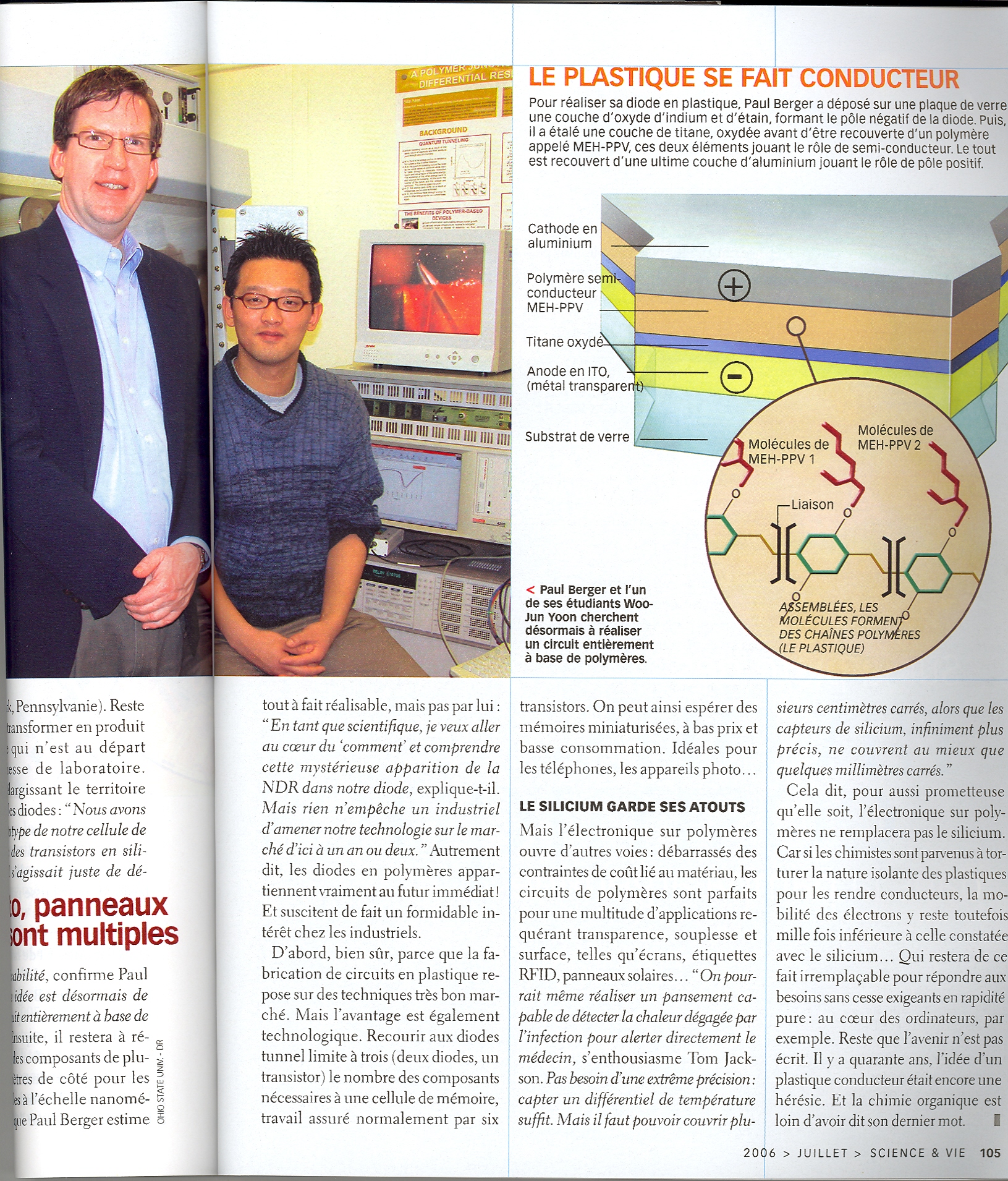
 , First Organic Tunnel Diode Viable for Circuitry (cited 49 times)
, First Organic Tunnel Diode Viable for Circuitry (cited 49 times)


 Return to
Paul R. Berger's Research page
Return to
Paul R. Berger's Research page